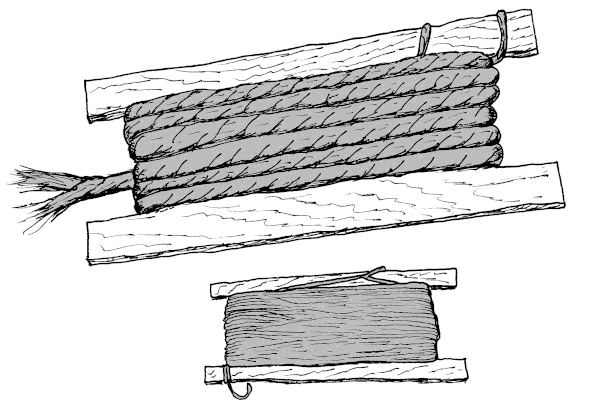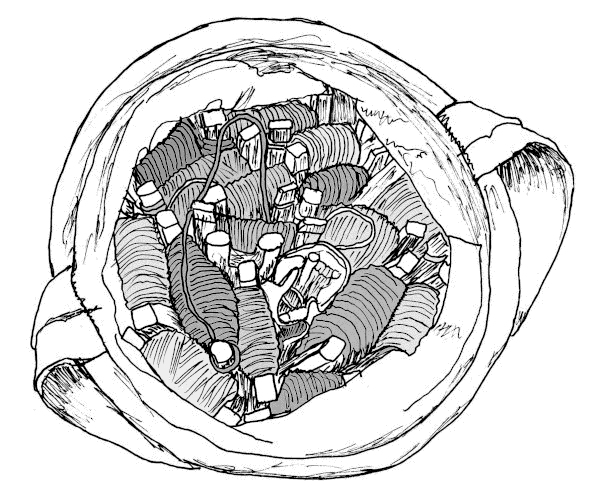
Figure 1: Ropemaker's Winders.
| Home | Equipment | Ropemaking |

Figure 1: Ropemaker's Winders.
I use the big winders when I'm twisting two ply rope by hand. I shove the "ears" into a crack in a log, or lean the winder against a wall so I have something steady to twist against. I start the rope by looping a wisp of fibers around one of the ears. When I've twisted a foot or more, I wrap it onto the winder and keep going. If I stop while I'm working on a rope, I just tuck the working end under the stuff on the winder, and it's ready when I am.
The small winders are mostly just for storage. I needed something sturdy and compact to keep my strings and yarns handy and untangled. Loose skeins and bundles turn into tangles far too easily. Wound balls, like kittens play with, take up too much space. These winders, shoved lengthwise into a basket or bag, still let you see all the fibers (and colors) from the ends.

Figure 2: Bag with Over a Dozen Winders.
They fit nicely in your pocket, so you've got whipping string handy while working on ropes. And they don't unspool all over the floor if you drop them.
When loading a small winder, I tie on to one of the ears with a bowline (ABOK[040] #1010). The free end is tied to another ear with a clove hitch (ABOK[040] #11). That way it's easy to figure out which end to pull from.
I use a coping saw for the end cut-outs. A little planing and a little sanding, (or a touch with the draw knife on a shaving horse), just enough to keep the splinters and snags down. You're ready to go.
| Colophon | Contacts |